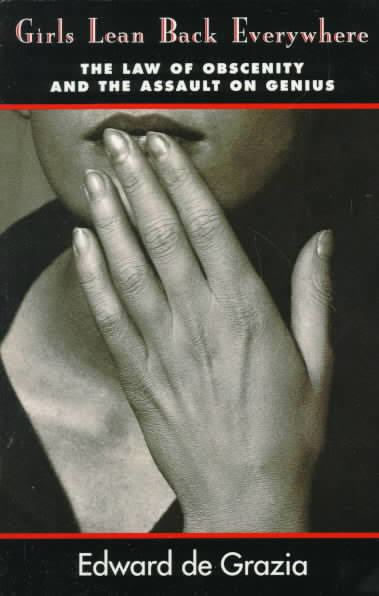8.2 /10 1 Votes8.2
Originally published 1992 | 4.1/5 Goodreads | |||||||||||||||||||||||||||||||||
 | ||||||||||||||||||||||||||||||||||
Similar The Well of Loneliness, Tropic of Cancer, Naked Lunch | ||||||||||||||||||||||||||||||||||
Girls Lean Back Everywhere: The Law of Obscenity and the Assault on Genius by Edward de Grazia is a 1992 book chronicling the history of literary censorship in the United States and elsewhere.
Contents
Contents
The book details the history of struggles against literary censorship, particularly in the United Kingdom and the United States of America. As the narrative develops, it turns increasingly to US First Amendment law. It tells the stories of various censorship struggles and cases throughout the twentieth century. The book is dedicated to Justice William Brennan.
The title comes from Jane Heap, discussed in chapter one, which is based on the biographical writings of Heap and Margaret Anderson. Heap and Anderson were American feminists and publishers, who published the "Nausicaa" episode of James Joyce's Ulysses in their magazine, the Little Review. Their effort to publish the work was censored as the result of a criminal prosecution instigated by John S. Sumner, Secretary of the New York Society for the Suppression of Vice. In response to Sumner, Heap wrote of James Joyce:
Mr. Joyce was not teaching early Egyptian perversions nor inventing new ones. Girls lean back everywhere, showing lace and silk stockings; wear low-cut sleeveless blouses, breathless bathing suits; men think thoughts and have emotions about these things everywhere--seldom as delicately and imaginatively as Mr. Bloom (in the "Nausicaa" episode)--and no one is corrupted.
Other chapters tell the stories of numerous publishers, authors, and works, including Radclyffe Hall's The Well of Loneliness; D. H. Lawrence's Lady Chatterley's Lover'; Lolita by Vladimir Nabokov; Theodore Dreiser and Émile Zola; and comedian Lenny Bruce, as well as of censor boards and organizations, such as the Boston Watch and Ward Society, the National Vigilance Association, and the Cincinnati Citizens for Community Values. The final chapter covers censorship in the 1980s of photographers Andres Serrano, Robert Mapplethorpe, and Jock Sturge; musicians 2 Live Crew; and performance artists Karen Finley and Holly Hughes.
The book is organized in the form of a court transcript, effectively "put[ting] the arts vigilantes on trial."
Publication history
The first two chapters of the book were published serially in the Cardozo Arts & Entertainment Law Journal.
Significant reviews and reception
The book has been described as "monumental", "authoritative", and "inspired", although sometimes "bloat[ed] ... with facts irrelevant to censorship." Publishers Weekly described the book as a "remarkable tour de force of literary/legal sleuthing".
